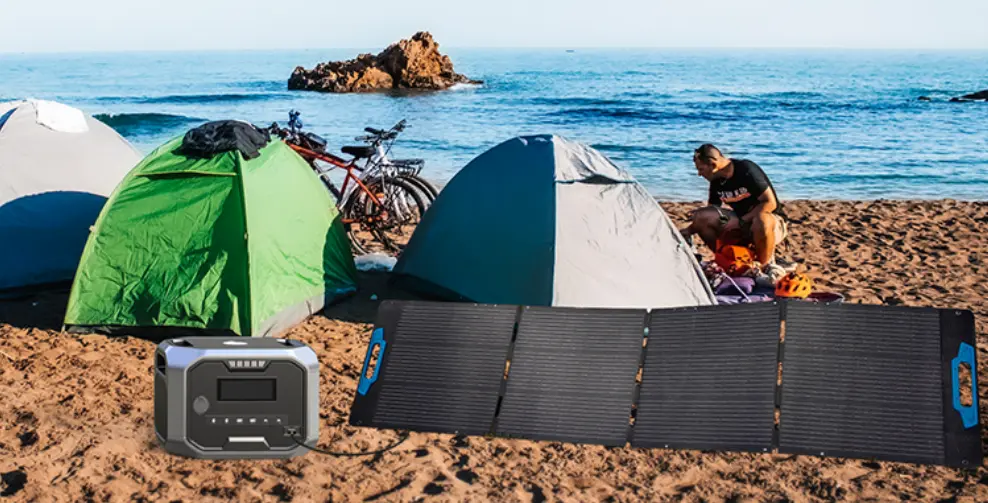
A solar generator is a device that converts sunlight into electrical energy, which can then be used to power various appliances and devices. Here’s a basic overview of how it works:
- Solar Panels: The process begins with solar panels, also known as photovoltaic (PV) panels, which are made up of many solar cells. These cells are typically made from silicon and generate electricity when they absorb sunlight. When sunlight hits the solar cells, it knocks electrons loose from their atoms, allowing them to flow through the material to produce electricity.
- Charge Controller: The electricity generated by the solar panels is direct current (DC). A charge controller regulates the voltage and current coming from the solar panels to ensure that the batteries are charged properly and not overcharged. It helps in maintaining the health and longevity of the battery.
- Battery Storage: The DC electricity is then stored in batteries. These batteries store the energy for later use, so you can have power even when the sun isn’t shining. Common types of batteries used include lithium-ion and lead-acid batteries.
- Inverter: Most household appliances run on alternating current (AC), so an inverter is needed to convert the stored DC electricity from the batteries into AC electricity. This allows you to use the stored solar energy to power standard AC appliances and devices.
- Power Outlets/Ports: Finally, the solar generator typically includes various outlets or ports where you can plug in your devices. These might include standard AC outlets, USB ports, and 12V carports, among others.
To summarize, a solar generator captures sunlight via solar panels, regulates and stores the energy in batteries, converts the stored DC electricity to AC using an inverter, and then provides accessible power through various outlets for different uses.




